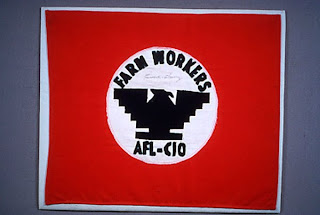San Jose City Hall
In view. A point of perspective. we all look at an object, yet we will never experience the exact same vantage point. Many factors come into play within us as individuals: Some of us might be more tired than others, some of us may have younger and wondrous eyes, and some of us may have older experienced eyes. These are all factors outside of our control, and they are what affect us. In architecture, factors that affect the design of a building, aside from our individual perspective and our human condition, are things like raw materials and client requirements.
When looking at the use of raw materials, It is very clear that Richard Meier, the designer of San Jose City Hall, has an inner struggle between determinism and free will. He understands that raw materials, born out of nature, have characteristics of their own. Yet he makes it a point to assert his free will by way of aligning compositions of materials in vertical & horizontal planes, and patterns. We can see this alignment in how the major scores of the hardscape (horizontal plane) are perfectly aligned with with window mullions and protruding portion of the building (vertical plane).
Another factor out of his control is client demands. The City wanted the architect to create a building that would last for a hundred years and that would create a magnet for design; raw materials provide these services. Stone cladding has many quirks that have to be dealt with. So, the architect, accepted the stone for what it is, and with great control, wielded it to the best of his abilities. Split face stone (a rough surface) is not rough at all planes. At the ends, the stone is saw-cut; these saw-cut ends are aligned with a perpendicular plane of saw-cut stone facing. Also, another tool in his designer’s bag-of-tricks is the use of white raw materials. The stone is white and the aluminum is pretty white as well. This choice of white materials is, again, his assertion of his free will in an uncontrollable universe and stating that he is making that choice, yet paradoxically, they are materials that the universe provided to begin with. Aside from the raw materials used on the project he used the interruption of patterns in an attempt to show his assertion of free will.
When looking at the functionality of the building there is no practical reason to stop a pattern from continuing. This is especially true of the sun shades. On the Sixth street side of the building, we can see a pattern of sun shades rhythmically flowing from left to right and suddenly without any practical reason, the pattern stops and there are full sets of windows without sun shades. Near the front entrance but closer to the fountain, there is a protruding portion of the building that runs the entire vertical face of the building except at the bottom where there is only a few feet clearance between the protrusion and solid ground. In other words, although protrusion appears that it is going from ground to roof, it in reality is cantilevered. Other cantilevered elements could have just as easily been designed with more practicality; an overhang at the sixth street entrance could have very well been supported with a post; and the elevated walkway at the front could have been attached to the adjacent stone wall, and also supported with post.
As such, his ability to bind the determinism imposed on him with his best his best attempts at free will is what makes him a master builder. Maybe we all have these internal struggles; each of us battling with different kinds. furthermore, maybe each of us even trying to accept and defy what is there. With that, I say, and not necessarily that God needs to, but if He is whom put us here and we are all doing his will, regardless of our own egocentric mentality, then I say the reason God put us here is so that He could experience his creation from every vantage point of us all in this universe. In other words, maybe Richard Meier’s deterministic approach to design is actually more inline with how the universe works. Thus, his approach is appropriate.




Comments